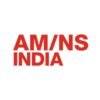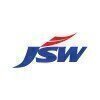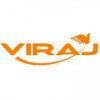Filter interviews by
POSCO-IPPC Interview Questions and Answers
POSCO-IPPC Interview Experiences
6 interviews found
(2 Questions)
- Q1. DP grade stand for
- Q2. Dual phase ( ferrite and martensite)
Interview Preparation Tips
Quality Manager Interview Questions asked at other Companies
I applied via Walk-in and was interviewed in Jan 2024. There was 1 interview round.
(2 Questions)
- Q1. Technical questions
- Q2. Maintenance questions
Interview Preparation Tips
Trainee Interview Questions asked at other Companies
I applied via Approached by Company and was interviewed before Feb 2023. There were 5 interview rounds.
(1 Question)
- Q1. Document Screening
(1 Question)
- Q1. Job roll related questions
Region Aptitude test, English language, Computer knowledge, Group discussion
(1 Question)
- Q1. Technical round job responsibilities will GM
(1 Question)
- Q1. Final round with Korean GM
Interview Preparation Tips
Deputy Manager Interview Questions asked at other Companies
I applied via Recruitment Consulltant and was interviewed before Dec 2022. There were 5 interview rounds.

General test on maths general knowledge
(1 Question)
- Q1. On your past experience and knowledge
(1 Question)
- Q1. Regarding job salary and position company overview
(2 Questions)
- Q1. Situation in past experience regarding profile.
- Ans.
Managed a team to successfully launch a new product within a tight deadline.
Led a cross-functional team to develop and launch a new product
Set clear goals and timelines for each team member
Regularly communicated progress and addressed any issues promptly
- Q2. Regarding past experience and disscus regarding future
Junior Manager Interview Questions asked at other Companies
POSCO-IPPC interview questions for popular designations
I appeared for an interview before Nov 2022.

(2 Questions)
- Q1. How much have you studied?
- Q2. Do you know how to measure?
- Ans.
Yes, I am familiar with measuring tools and techniques.
I have experience using measuring tapes, rulers, calipers, and micrometers.
I am proficient in reading measurements in both metric and imperial units.
I understand the importance of accuracy and precision when measuring.
I can follow instructions to ensure correct measurements are taken.
I have used measuring tools in previous roles such as carpentry or manufacturing.
Line Operator Interview Questions asked at other Companies
I applied via Newspaper Ad and was interviewed before Dec 2021. There were 3 interview rounds.

20questions in MCQ format....difficulty level medium
(2 Questions)
- Q1. General questions Residance,salory expectation, Family members Introduction Future goals
- Q2. Future goals Hhhhgffffg gggfd
Interview Preparation Tips
First 3-4questions are mandatory for selection so must try if even you piece of information.
Try to be honest with answers
Dont afraid while answering.
Production Planner Interview Questions asked at other Companies
Top trending discussions






Interview questions from similar companies

I applied via Campus Placement and was interviewed before Jul 2021. There were 4 interview rounds.

Topic was WHICH COMES FIRST? SAFETY, PRODUCTION OR QUALITY?
(1 Question)
- Q1. 1. Subject based questions 2. Situational questions 3. Common sense question
(5 Questions)
- Q1. Behaviourial assesment & financial Negotiations
- Q2. Where do you want to see yourself after 5 years?
- Q3. What will be the extra efforts from your side to keep the organisation high
- Q4. How long will you stay with us
- Q5. Will you interested in higher education
Interview Preparation Tips

I applied via Walk-in and was interviewed in Jun 2021. There was 1 interview round.
Interview Questionnaire
1 Question
- Q1. Company related questions
Interview Preparation Tips

I applied via Approached by Company and was interviewed before May 2021. There were 3 interview rounds.

(1 Question)
- Q1. All about area related work
(1 Question)
- Q1. Package finalizing and house allotment process
Interview Preparation Tips

Interview Questionnaire
1 Question
- Q1. Basic mechanical engineering
Interview Preparation Tips
POSCO-IPPC Interview FAQs
Tell us how to improve this page.
POSCO-IPPC Interviews By Designations
Interview Questions for Popular Designations
- Senior Executive Interview Questions
- Associate Interview Questions
- Analyst Interview Questions
- Software Engineer Interview Questions
- Senior Associate Interview Questions
- Sales Executive Interview Questions
- Graduate Engineer Trainee (Get) Interview Questions
- Associate Software Engineer Interview Questions
- Show more
POSCO-IPPC Interview Process
based on 8 interviews
Interview experience
Interview Questions from Similar Companies
POSCO-IPPC Reviews and Ratings
based on 41 reviews
Rating in categories
|
Assistant Manager
12
salaries
| ₹7 L/yr - ₹11.1 L/yr |
|
Junior Manager
12
salaries
| ₹7.2 L/yr - ₹9.5 L/yr |
|
Executive
7
salaries
| ₹2.8 L/yr - ₹4 L/yr |
|
Trainee
6
salaries
| ₹1 L/yr - ₹3.5 L/yr |
|
Senior Executive
6
salaries
| ₹4.7 L/yr - ₹6.3 L/yr |

Tata Steel

JSW Steel

Jindal Steel and Power

ArcelorMittal Nippon Steel
- Home >
- Interviews >
- POSCO-IPPC Interview Questions











